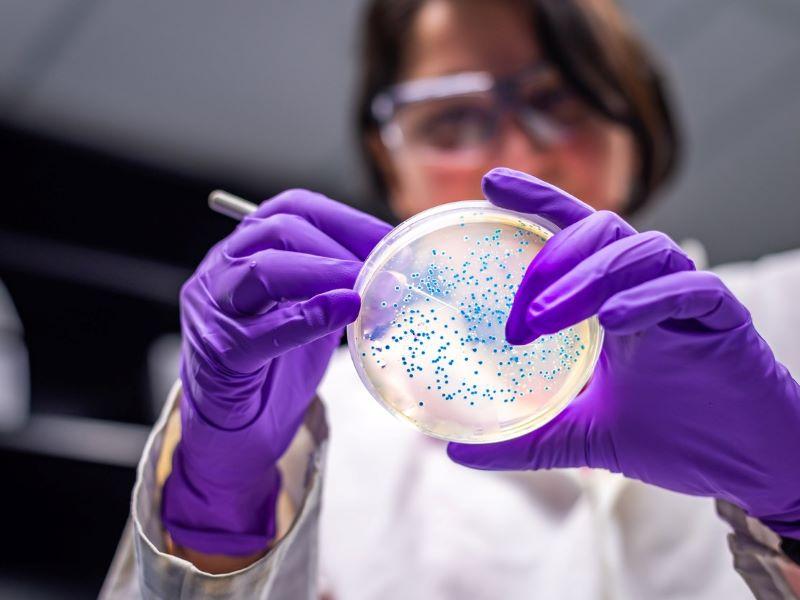
The challenges of creating a multidisciplinary research centre and how to overcome them
How to overcome the challenges of setting up a collaborative research centre designed to break down institutional silos and structures
Research management
Sponsored by

Elsevier helps researchers and healthcare professionals advance science and improve health outcomes for the benefit of society.

You may also like
Popular resources
We know that the challenges facing the world require multidiscipline, multi-partner, multi-sector global collaborations to develop successful and sustainable solutions. To achieve this, we must break down the barriers within our institutions – the structures we have operated in for decades – and challenge ourselves to find new ways of working and new ways of sharing.
Our challenge
About six years ago, the University of Glasgow began drawing up plans for a collaborative research building to co-locate researchers from across the university, bringing a mix of disciplines together in multi-use spaces designed to stimulate engagement and collaboration. This highly flexible building would support research, promote external engagement and catalyse collaboration.
- THE Campus spotlight: Unpacking academic interdisciplinarity
- How to successfully develop and run interdisciplinary research teams
- Greener life science labs: the challenge to save energy and reduce waste
This has resulted in the new Advanced Research Centre (ARC), which will open officially in June 2022. Designing and bringing the ARC to life has challenged all those involved. Almost every aspect of the building has tested our normal processes and required us to rethink approaches. Here are some lessons we can share on the key challenges and how to overcome them.
Research structure
A multidisciplinary research centre is likely to sit outside of your traditional college configuration, which challenges the normal academic structure. There is no single connecting theme or focus. So how do you decide who moves in or how to arrange these research groups? How can you bring people into your research centre without leaving gaps in other university colleges? Finally, how do you ensure the new research centre is open and inviting to those in the colleges who do not have a dedicated space in the building?
You need to develop a structure to identify which researchers will move in. Based on this, labs and workspaces can be designed that are fit for purpose. We settled on five broad themes:
- Creative economies and cultural transformation
- Digital chemistry
- Global sustainable development
- Quantum and nanotechnology
- Technologies touching life.
Through these themes, academic leads, research groups and individuals could be identified and agreed as the first residents. There will be more than 500 researchers in the ARC, at all career stages, drawn from across the university. Through a curated programme of initiatives and events, researchers will be encouraged and supported to create cross-disciplinary networks and partnerships, make connections, work together to drive discovery research and deliver solutions to current and future global challenges.
Professional support
Creating a strong professional support team from within your university is key to helping you address many of the challenges you will encounter in setting up a collaborative centre. This group will also be key to ensuring there is facilitation and support to bring together research groups and individuals from across disciplines (and from outside your centre) to address challenge-led research solutions. We pulled together a multidisciplinary team from across professional services areas and colleges to provide leadership, ideas and support. Many have moved into new, permanent ARC positions, some have been seconded onto the project, while others have absorbed the new activities into their existing roles, recognising the pivotal role the centre will play in the future of research at the university.
This approach ensures the research centre is immediately integrated into the university and its networks. We’ve found that everyone involved has embraced the ARC and opportunities it presents for the wider university, looking beyond their own college or service area.
Research strategy
This will vary with every research centre, so you’ll need to develop an approach that works to meet your ambitions. In our case, we see the research centre as existing to support the key strategies of the university. This means that rather than developing a standalone centre-specific strategy, our delivery plan is focused on feeding into the institution-wide Research Strategy 2021-25. This ensures that we remain a useful asset for all the research communities within the university. This decision was vital in setting out expectations and clarifying the role of the ARC within the wider institution.
Communication of the project
It takes care to avoid a potential “us and them” environment developing within a university if a huge amount of money is being poured into a new research centre that houses a select group of researchers and staff. Ensure your communications are frank and honest from the start, acknowledging potential tensions. Make it clear the space belongs to everyone within the university community, regardless of where their desk is located.
For the past two years of development, our communications focused on taking the university community with us. The challenge now is to ensure that those working in the £116 million building also feel ownership for the centre and their role in delivering its purpose.
Embracing change
Enjoy the new and ongoing challenges that setting up and running a multidisciplinary research centre will bring. It will force you to break down the barriers that exist between academic and service areas within a university and to rethink approaches and try new ways of working.
The ARC has been a fascinating project to work on during the planning and development phase and now, as we prepare to open, it is an exciting operational project. We hope it will continue to challenge us for many years to come as it changes how we do things at Glasgow.
Andrew Tobin is the inaugural director of the new Advanced Research Centre (ARC) and professor of molecular pharmacology; Laura Tyler is research communications manager at ARC, both at the University of Glasgow.
If you found this interesting and want advice and insight from academics and university staff delivered direct to your inbox each week, sign up for the THE Campus newsletter.
Research management
Sponsored by


